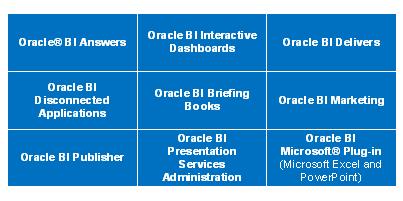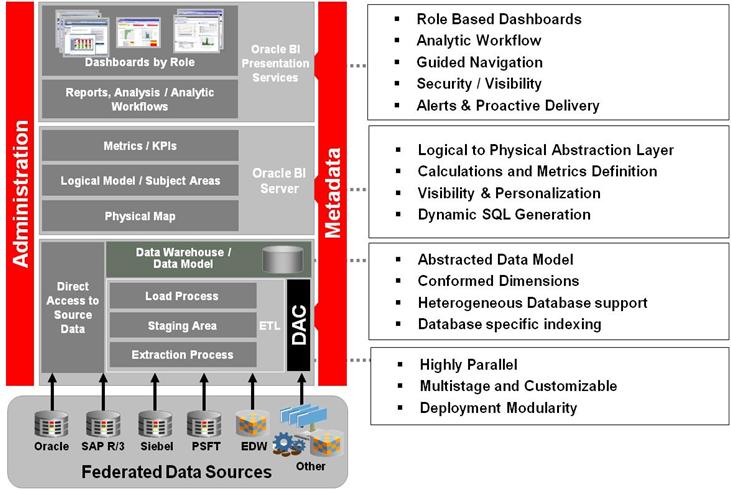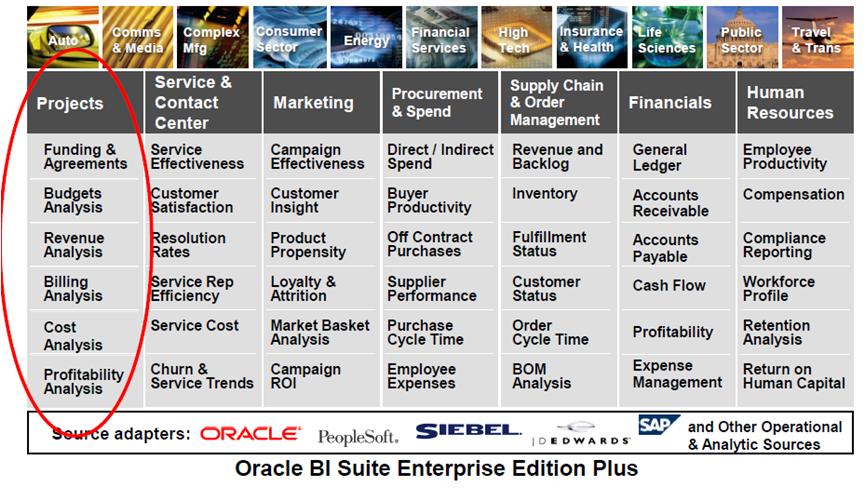By Robert D. Anderson, CPA
On June 22, 2010, I delivered an encore of my OAUG Collaborate 10 Presentation titled Using Oracle Project Analytics within Engineering and Construction Firms. You can watch the webinar here.
The webinar was packed with information; you’ll get more out of the session if you do a little pre-reading first. Therefore, I will cover some introductory material via blog articles published over the next two weeks.
Defining OBIEE
Oracle Business Intelligence Enterprise Edition (OBIEE) is a data warehouse solution comprising a comprehensive suite of enterprise Business Intelligence (BI) products that deliver a full range of BI capabilities. These include interactive dashboards, full ad hoc, proactive intelligence and alerts, enterprise-level reporting, real-time predictive and actionable intelligence, disconnected analytics, and more.
The following graphic shows that nine items comprise the core of the OBIEE solution.
These tools deliver all the dashboards, reports, drill-down features, printing, sharing, downloading, ad hoc analysis tools, publishing tools, and data presentation schemes from tables to bubble charts.
This functionality resides in multiple applications across three primary Tech Stack levels. These areas are, from bottom to top:
- Physical Layer
- Semantic Object Layer
- Presentation Layer
The architecture layers and components are shown in the following graphic.
We will address the changes needed to the various levels when adding new data metrics and updating reports and dashboards. This structure supports all the analytic models, and the changes discussed in this whitepaper also apply to the other analytical models.
Analytics
The primary analytic packages are shown in the following image.
Focus
Our webinar will focus on the first column in the above chart: Projects.


